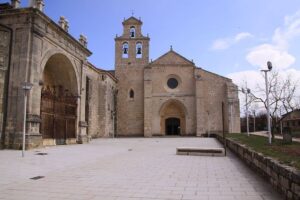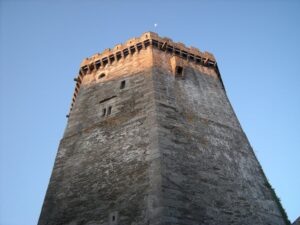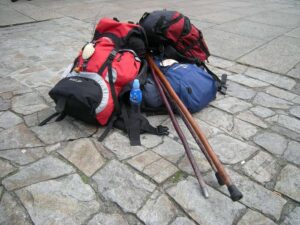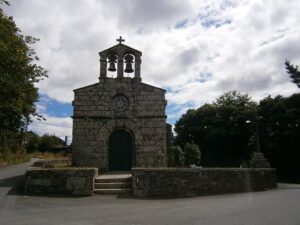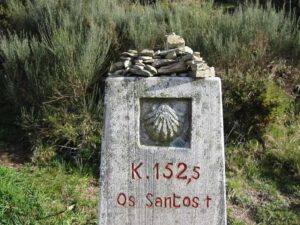
Located right along the Northern Way of the Camino de Santiago, Soto de Luiña is one of those small places that, despite its size, leaves a lasting impression on a pilgrim’s heart. It doesn’t stand out for grand monuments or an extensive tourist offer, but that’s exactly where its charm lies: in the peaceful rural setting, its genuine welcome, and the remnants of a centuries-old tradition of hospitality.
In this guide, we’ll show you what to see in Soto de Luiña and why it’s well worth stopping in this Asturian village, which, without meaning to, has earned a special place in the Camino experience.
Índice de contenidos
Why choose the Northern Way?
Yes, each Camino route has its own magic: for example, the French Way is the most sociable, the Original Way challenges you with its mountainous toughness, and the Portuguese Way from Tui seduces with its blend of historical heritage and Miño River landscapes. All are wonderful choices. Likewise, the Northern Way is a Jacobean route full of charm and reasons to follow it.
One of its biggest attractions is the landscape diversity: this route runs parallel to the Cantabrian Sea, offering pilgrims spectacular views of the coastline, cliffs, hidden beaches and verdant inland mountains.
Each stage surprises with a wide range of natural settings, from lush forests to open meadows overlooking the sea. For example, walking the Camino de Santiago from Bilbao to Santander lets you experience the more urban side of the route, while doing the Northern Way from Ribadeo shows you the more rural face of the Camino.
Beyond its landscapes, the Northern Way offers a high level of authenticity and tranquillity. Unlike the more crowded routes, here you’ll find fewer groups, allowing for a more introspective experience and closer connection with the local communities. Charming fishing villages, rural hamlets, and historic towns are scattered along the way.
Moreover, the Northern Way has a well-developed infrastructure for pilgrims. Along the route you’ll find fountains, bars, and sufficient signposting to guide your way.
Planning any of these routes can certainly be done independently. However, it’s always best to rely on the support of a Camino de Santiago tour agency specialised in organising the journey.
Soto de Luiña: a charming stop on the Northern Way
Soto de Luiña is one of those welcoming villages where the Northern Way is lived with particular intensity. This rural parish, with barely 500 inhabitants, belongs to the municipality of Cudillero. For the pilgrim, this place is a haven of peace: here you can rest from the hustle and bustle, enjoy the natural surroundings, and experience Asturian hospitality in its purest form.
Despite its size, the village has the basic services a walker needs (bars, a shop, pharmacy, cash machine, etc.), making it a comfortable and pleasant stop before continuing on your route. The atmosphere is warm and friendly. Locals are used to seeing pilgrims pass through and usually greet them with a smile or a few encouraging words.
So let’s go through the main points of interest in Soto de Luiña.
Church of Santa María de Soto de Luiña
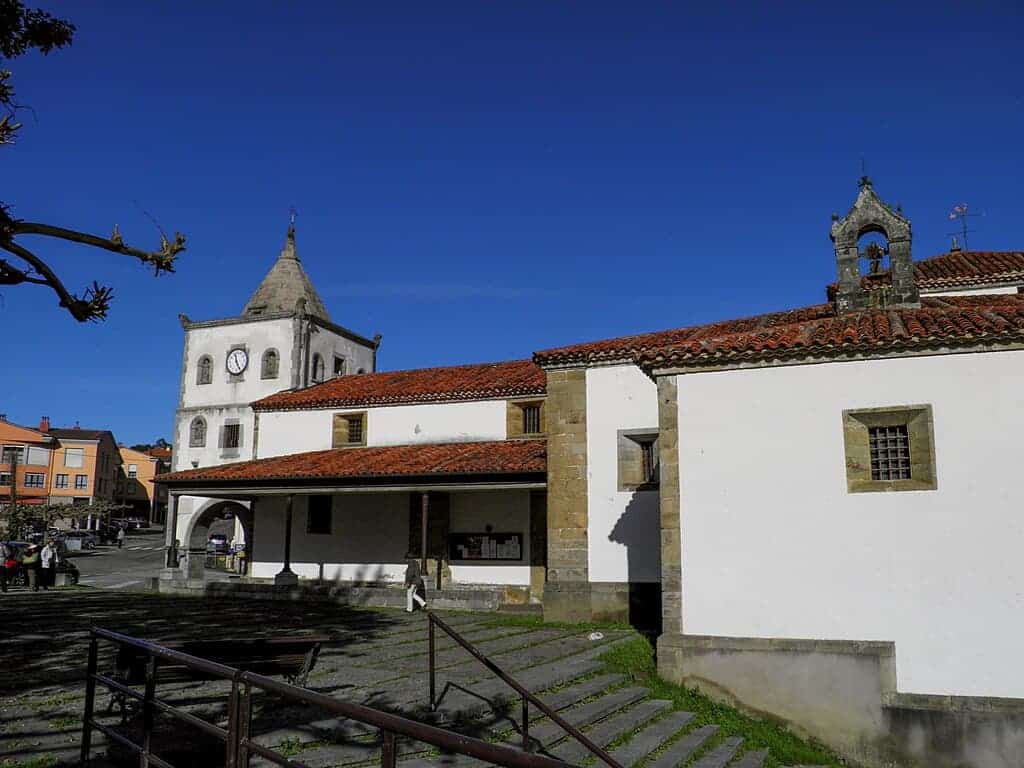
Without a doubt, the parish church of Santa María is the most iconic monument to see in Soto de Luiña. Located in the heart of the village, its slender white and grey tower in rural baroque style has become an unmistakable symbol of the area.
It was built in the 18th century on the foundations of a former medieval chapel and beside an even older sacred spring. In fact, beneath the apse of the church still flows the so-called Hospital Fountain, a historic source that supplied water to both the village and the old pilgrims’ hospital in centuries past.
Its façade is white with ashlar stones at the corners and around its openings. The square bell tower, with three storeys topped by an octagonal cupola, stands out for the semicircular arches at its base (forming an open portico where pilgrims could shelter) and for the niches with sculptures on its walls.
Inside, the church houses altarpieces and statues from the 17th and 18th centuries. In fact, there are records of pieces dating back as early as 1609. After a restoration in 1984, the church was declared a Historic-Artistic Monument.
It is a UNESCO World Heritage Site due to its historical importance on the Jacobean route.
The Rector’s House and the former pilgrims’ hospital
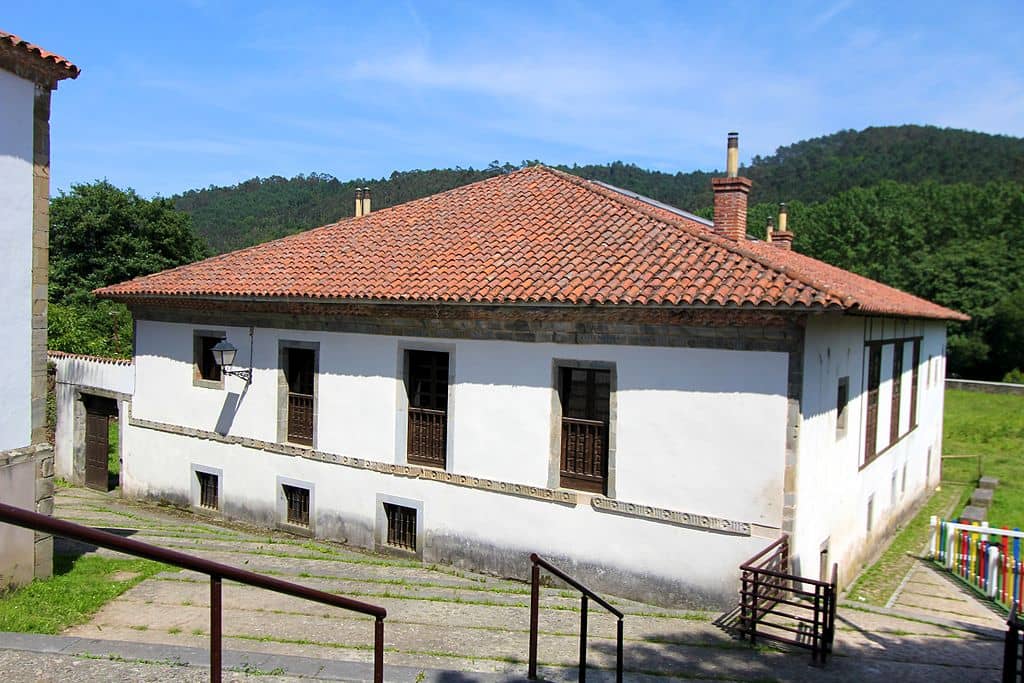
Right next to the church, connected by a narrow path, is the Rector’s House of Soto de Luiña. This large two-storey house, also from the 18th century, was originally built as a pilgrims’ hospital and residence for the parish priests.
Its elongated shape and tiled roof reflect the style of a noble Asturian rural house. Inside, you can still admire decorative frescoes in some rooms, along with baroque architectural details that highlight its historical importance.
Historically, Soto de Luiña once had two pilgrims’ hospitals due to the large number of walkers along the coastal route. Of these, only this one remains.
Nature and relaxation: San Pedro beach and rural surroundings
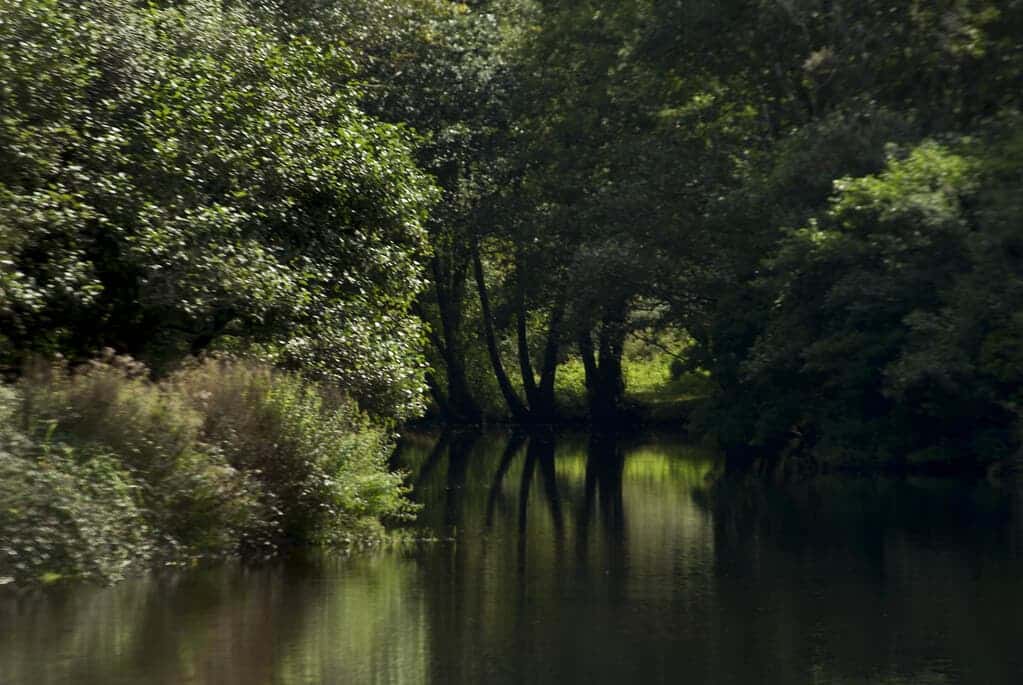
One of the additional pleasures of stopping in Soto de Luiña is the chance to enjoy its privileged natural setting.
Just about 2 kilometres from the village centre lies San Pedro de la Ribera Beach. This wide stretch of golden sand, framed by forested hills, is perfect for unwinding after a day’s walk. If the weather is good, many pilgrims take the opportunity to head down to the beach, have a swim in the Cantabrian Sea, or simply lie on the sand and rest their legs.
The beach features the typical local mix of fine sand and coarse pebbles, as well as a river mouth that adds beauty to the landscape. It’s part of the Protected Landscape of the Western Asturian Coast, which helps preserve its natural and clean environment.
But nature appreciation doesn’t stop at the beach. Soto de Luiña is surrounded by green valleys, native woodlands, and gentle hills that are ideal for short explorations.
The village lies in the Esqueiro River valley, a fertile area that was once strategically important for travellers before tackling the region’s steep cliffs. Today, the river and its surroundings offer shaded riverside trails where you can stretch your legs in a fresh and peaceful environment.
Also nearby are:
- The cliffs of Cabo Vidío, offering stunning views of the wild Cantabrian Sea.
- The Concha de Artedo Beach, another beautiful coastal inlet.
- And even the nearby town of Cudillero, the municipal capital and a famous fishing port with colourful houses, is only a short trip away (although it’s off the official route, some pilgrims make a detour to visit it).
In short, the Soto de Luiña area offers a wide variety of coastal and rural landscapes within easy reach, making it more than just a technical stop: it’s a true experience for the senses.
Culture, gastronomy and traditions of Soto de Luiña
In terms of festivities and religion, the village celebrates its patron saint’s feast in honour of Our Lady of Humility every 8th of September, with open-air dances, street parades, and religious events that bring the village to life.
A few weeks later, on the second Sunday in October, the feast of Our Lady of the Rosary takes place, featuring El Mercadín, a traditional fair known for its strong culinary character.
When it comes to food, Asturias is renowned for its hearty, home-style cuisine, and Soto de Luiña is no exception. You won’t find fancy modern dishes here, but rather traditional meals full of homemade flavour—exactly what your body craves after long walks.
Here you can enjoy:
- Fresh seafood from the Cantabrian Sea, such as grilled or stewed fish (hake, horse mackerel, squid, etc.), and if you’re lucky, a rich fish or seafood stew.
- This is also a land of quality meats and cured sausages. A popular Asturian classic often served at local festivals is bollos preñaos—soft bread rolls stuffed with chorizo, served warm and perfect with a bottle of traditional cider.
- Another hearty treat is homemade empanadas, filled with tuna and sofrito or with meat, often sold at the local bakery.
- And if you arrive with a real pilgrim’s appetite, a hot plate of fabada asturiana or a cachopo will more than satisfy—though beware of overeating if you’ve still got miles to go!
Lastly, it’s worth highlighting the cultural warmth of this village. Soto de Luiña has always been committed to preserving its customs, heritage and natural surroundings. In fact, the village was honoured as an Exemplary Village in the 1990s for its communal efforts to keep its traditions alive.
There are also some fascinating historical anecdotes: for example, it’s known that in 1976 the famous British writer Graham Greene spent the night in Soto de Luiña during a trip through northern Spain. Even Cardinal Angelo Roncalli—later Pope John XXIII—passed through a few years before his papacy, leaving behind local stories still remembered today.


